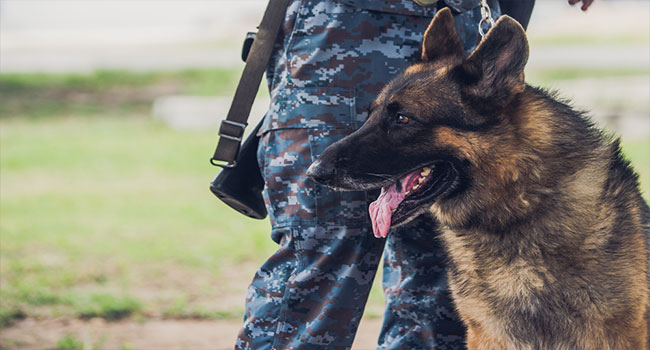
Former Navy SEAL Trains Dogs to Find and Attack Active Shooters in Schools
A dog trained by veteran Joshua Morton to respond to school shootings will start working in a school for the first time in January.
- By Haley Samsel
- August 19, 2019
A former Navy SEAL is making headlines for using his skills as a K-9 handler in the military to train dogs to respond to gunfire in schools by tracking down the gunman.
Joshua Morton of Iowa originally started training police dogs when he returned from his final overseas, NBC Washington reported. But when he started mass shootings and how assault weapons were used to perpetrate violence in schools, Morton decided to start training dogs to respond to active shooter situations.
"I did not expect to see what I saw overseas, to see it in schools. But, unfortunately, it's happening," Morton told NBC. "I've been trying to find this solution for a very long time."
That idea has culminated in a Minnesota school preparing to receive one of Morton’s dogs in January, along with a trained K-9 handler. The price tag is high, at $125,000 per year for a dog and a handler, but Morton believes it’s worth it to ensure student safety.
During training, the dogs are taught to use their senses to find the room where they heard the gunshots and go after the person handling the gun. Morton is currently working with five puppies who are clones of his original training dog. The veteran said cloning the dogs makes their behavior and response to training more consistent.
Morton acknowledged that in the event of an active shooter, the trainer is sending the dog as a “canary,” or a distraction, so that the gunman will direct its attention to the animal instead of people and commit fewer casualties.
"It's a hard pill to swallow but I'm sorry, it's reality,” he said. “I would rather it be him than a child or somebody else."
Administrators at an Iowa school expressed skepticism about some of the logistics of keeping the dog and handler on campus, including where the dog would stay during the school day and who the district would hire to handle the animal.
But Morton said it’s imperative that veterans and others who have experience dealing with active shooter scenarios are put in the position to help save lives with their trained K-9s.
“You can't expect your gym teacher to do this," Morton said.
About the Author
Haley Samsel is an Associate Content Editor for the Infrastructure Solutions Group at 1105 Media.